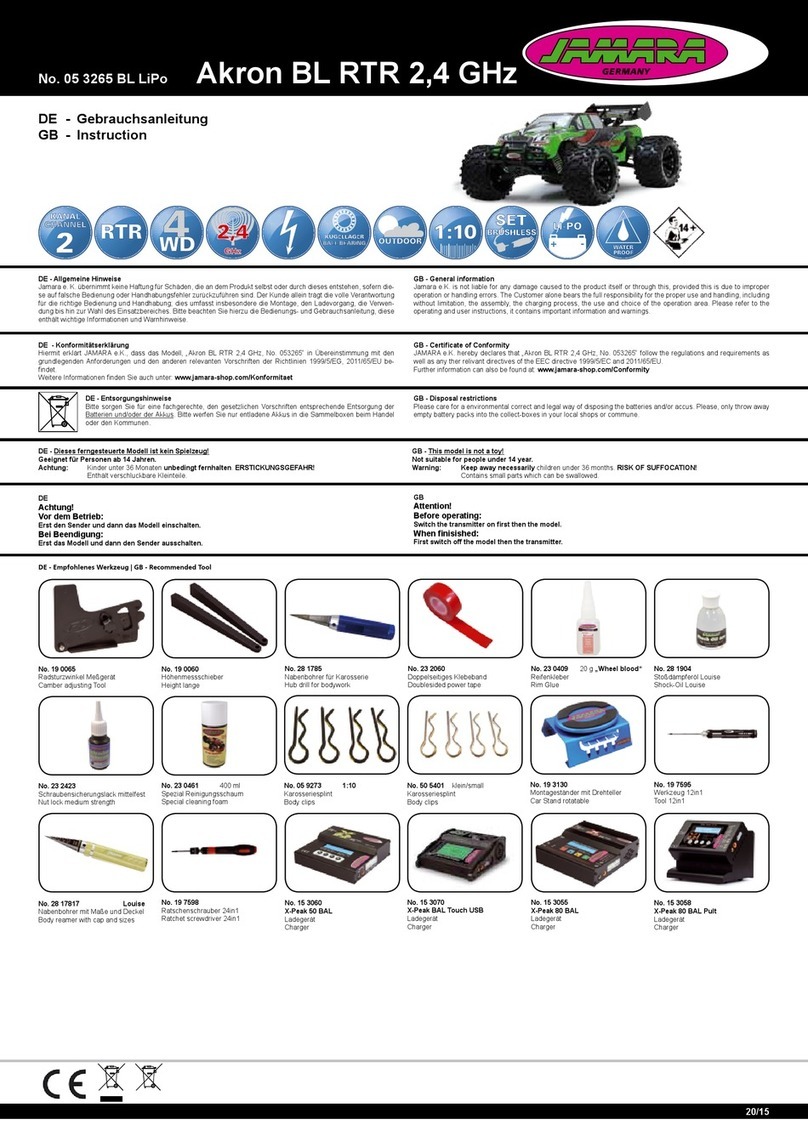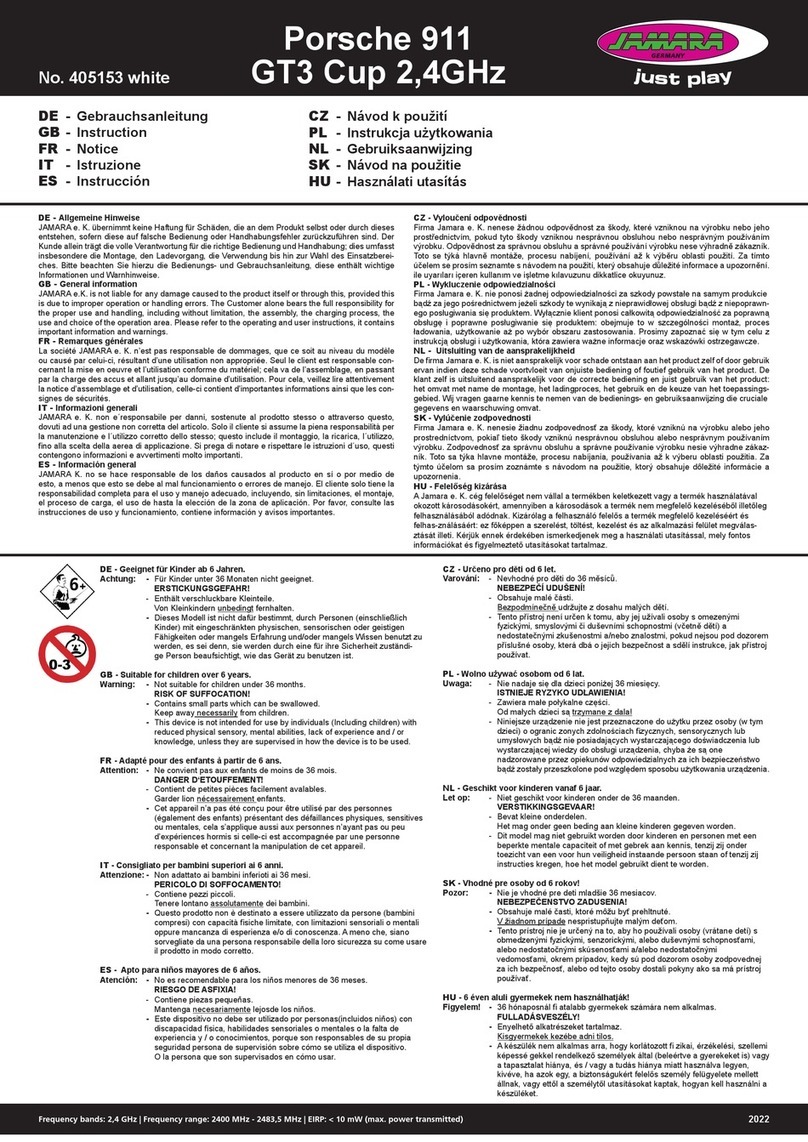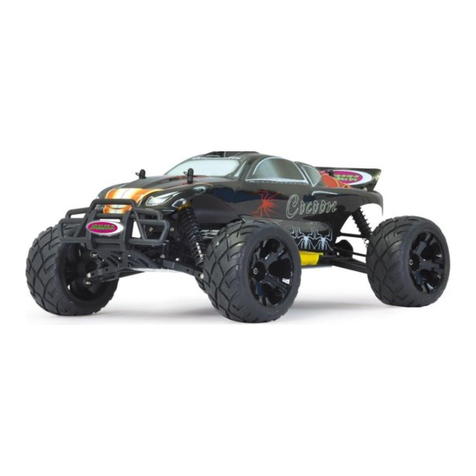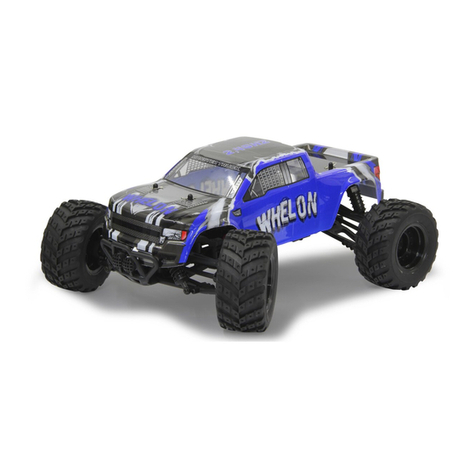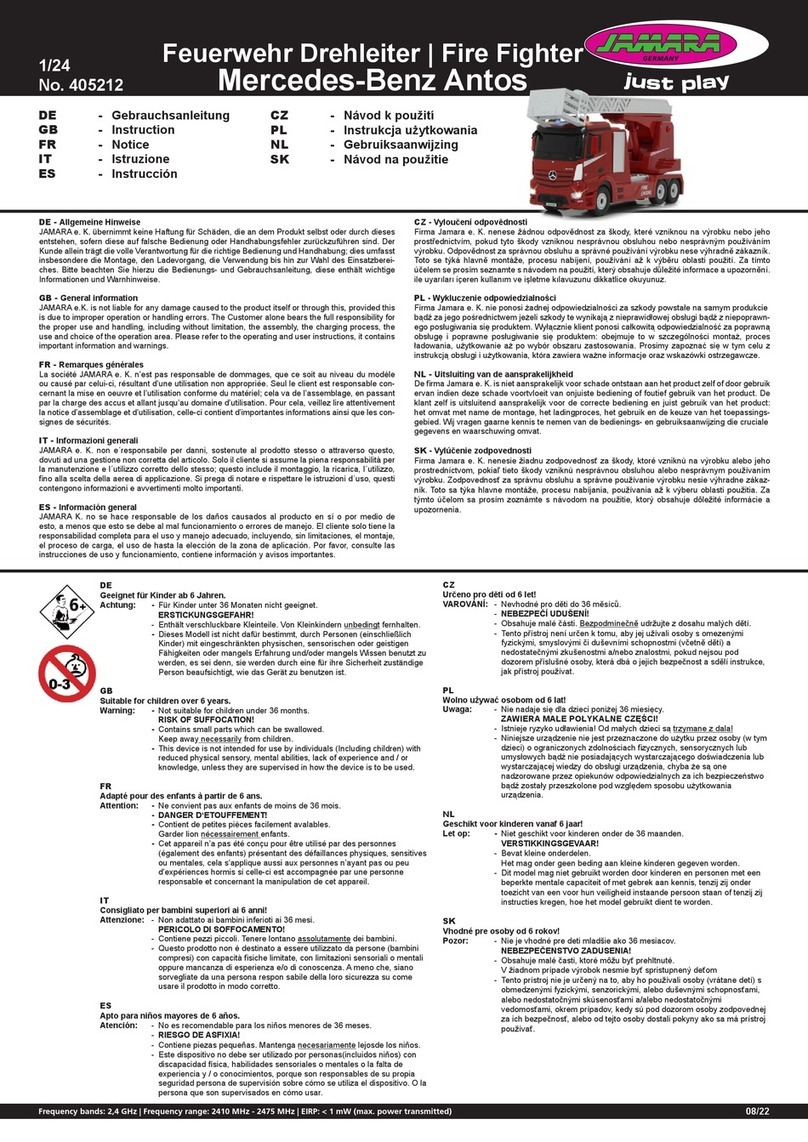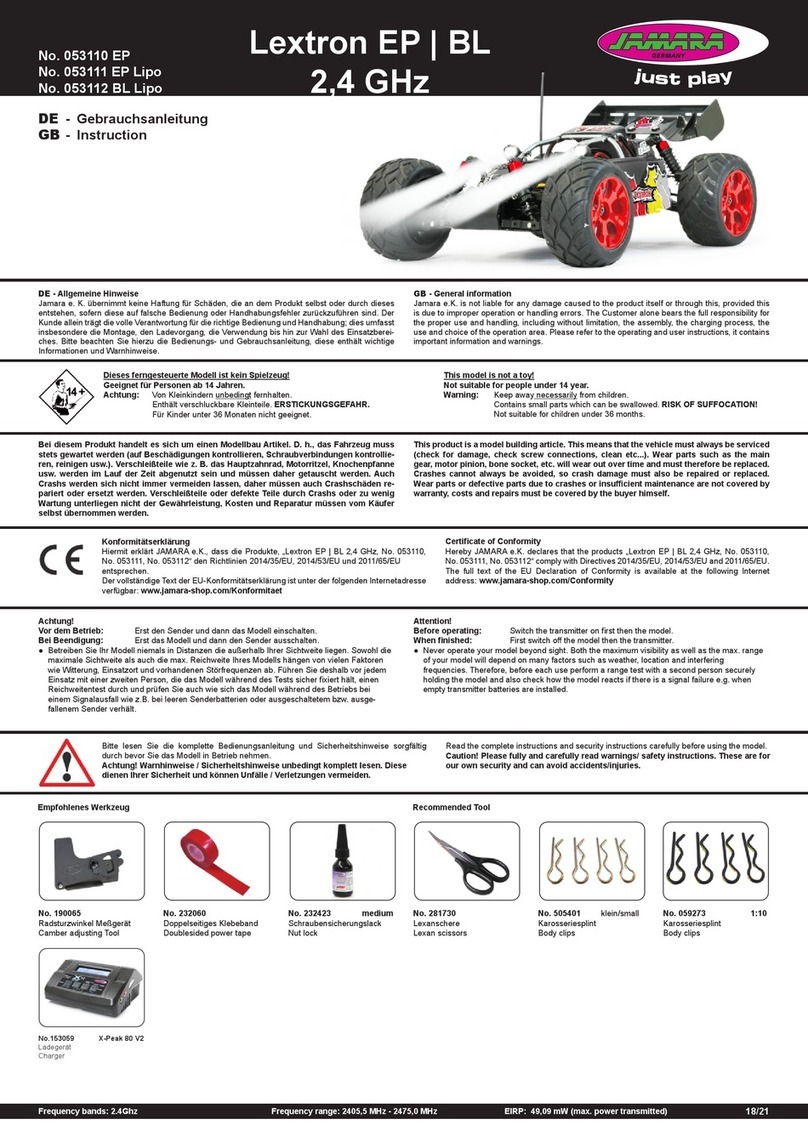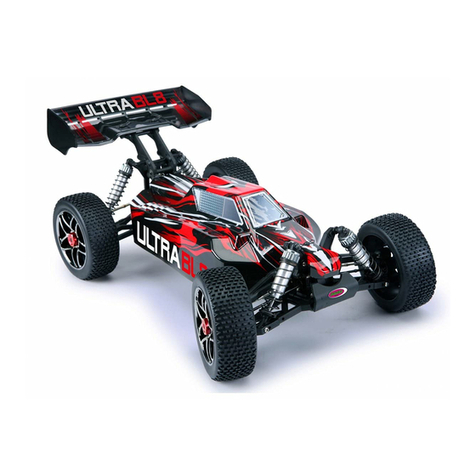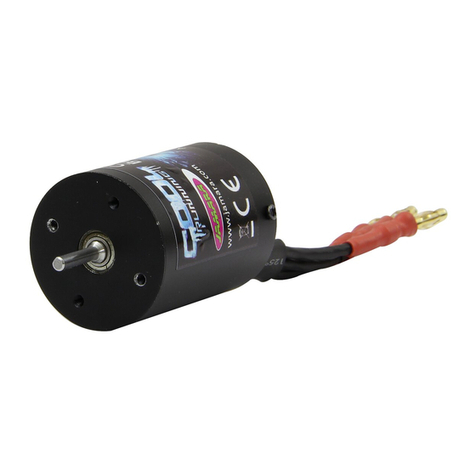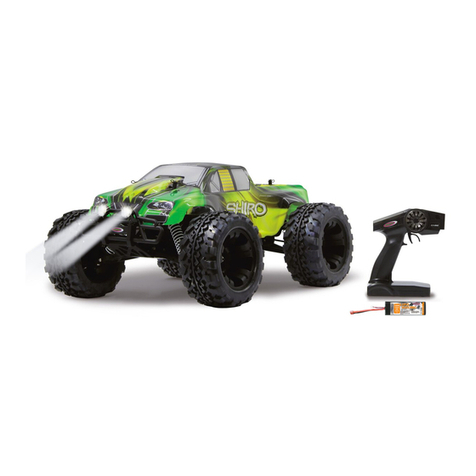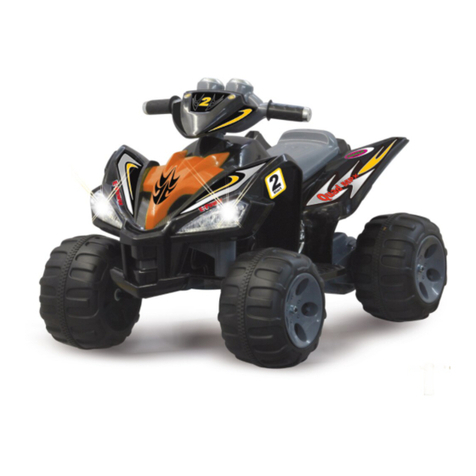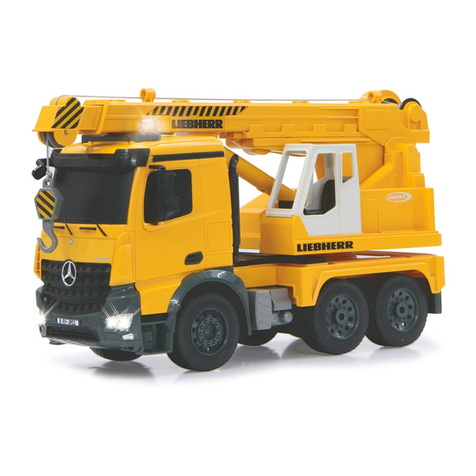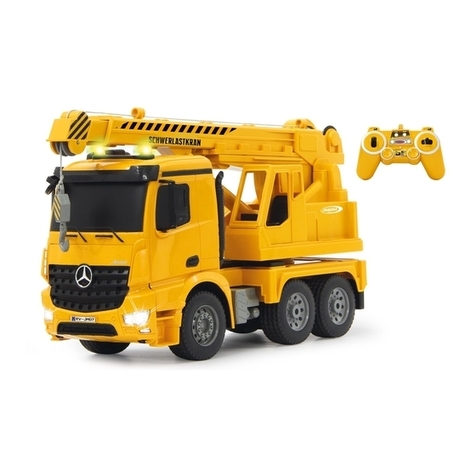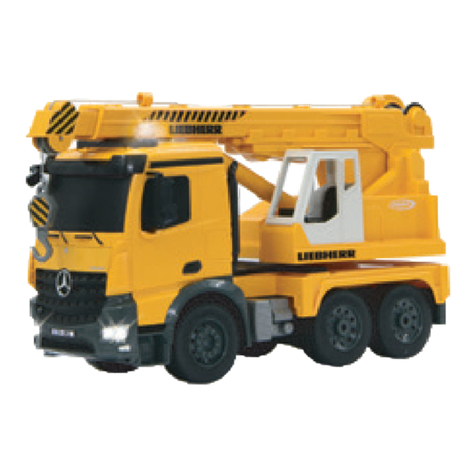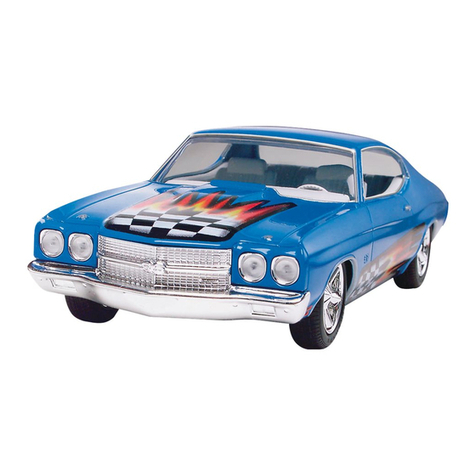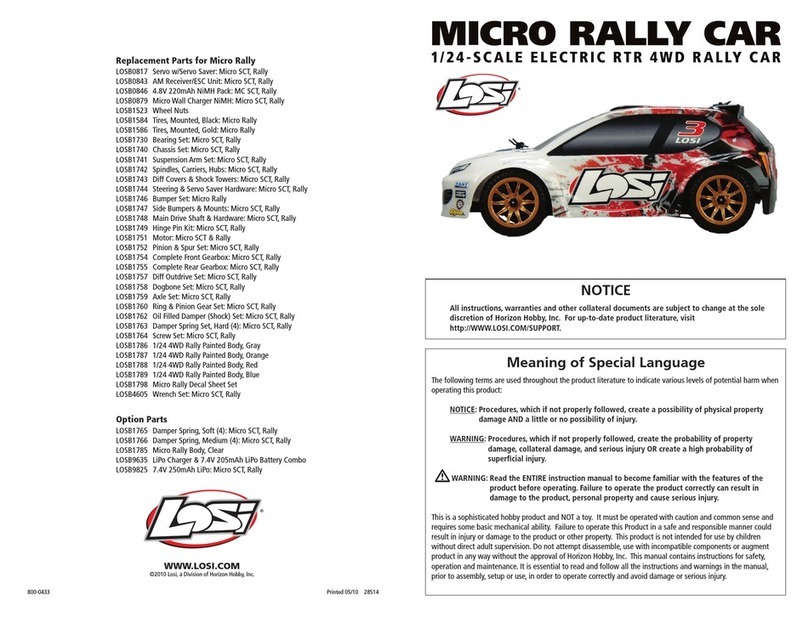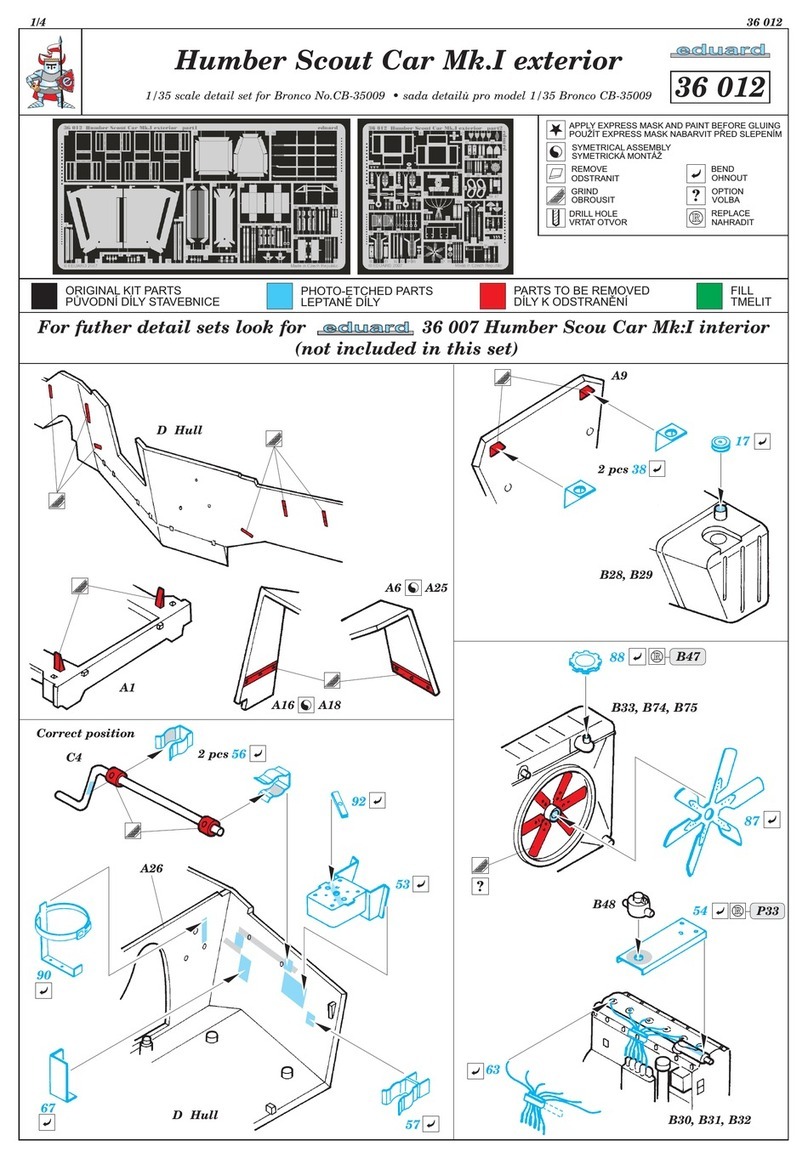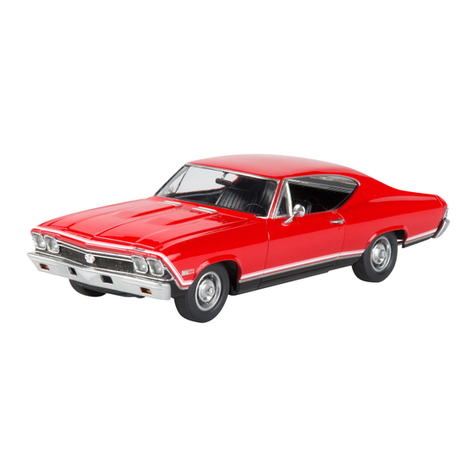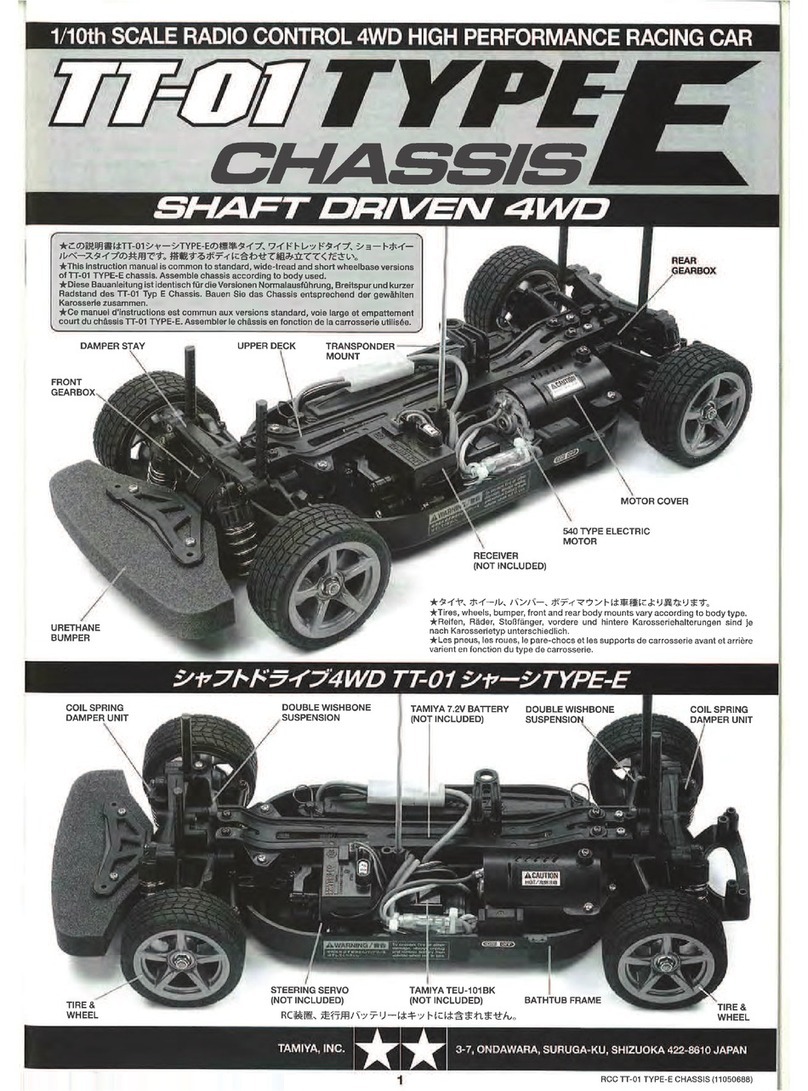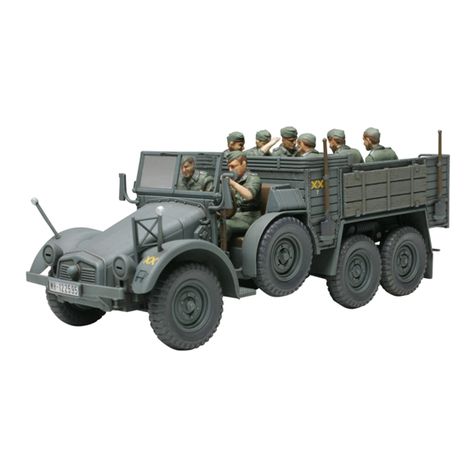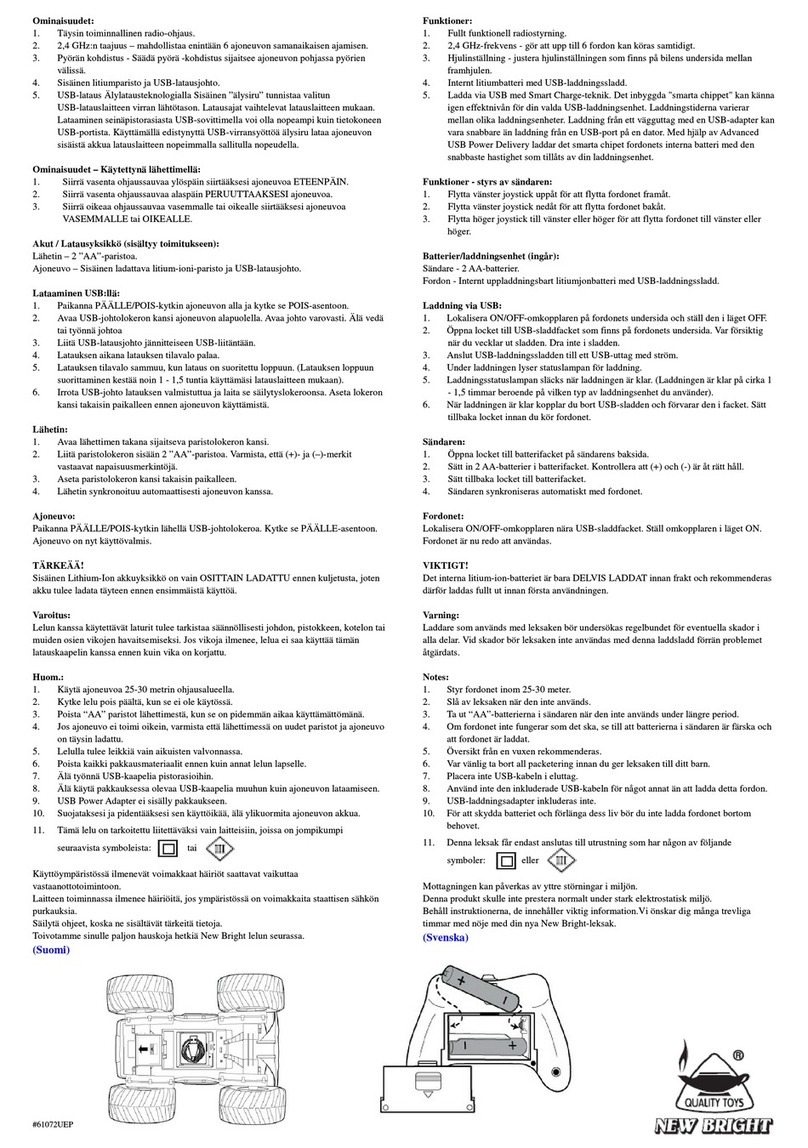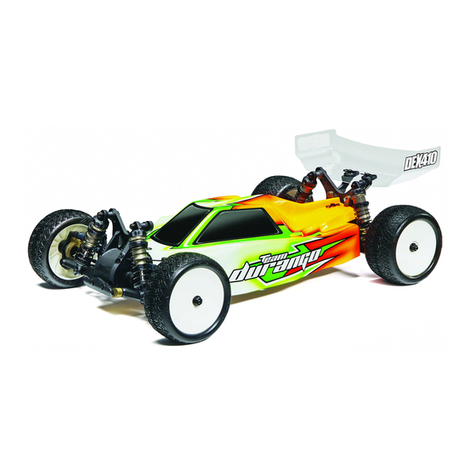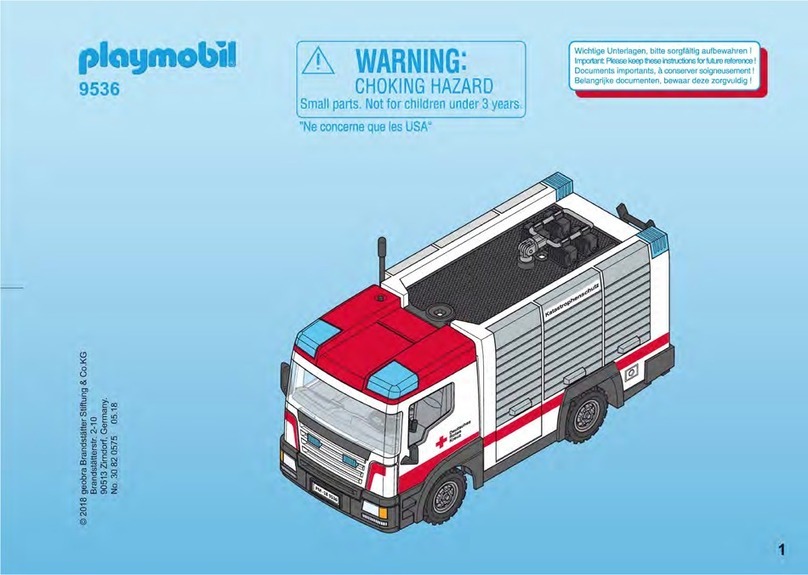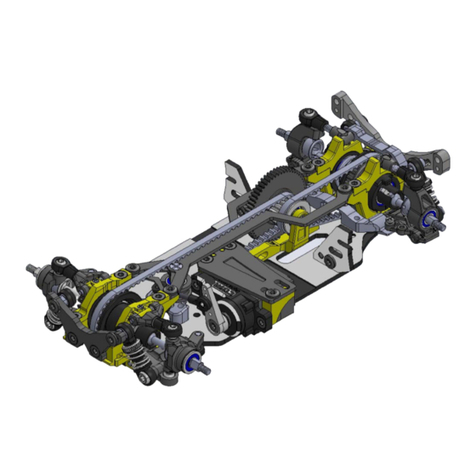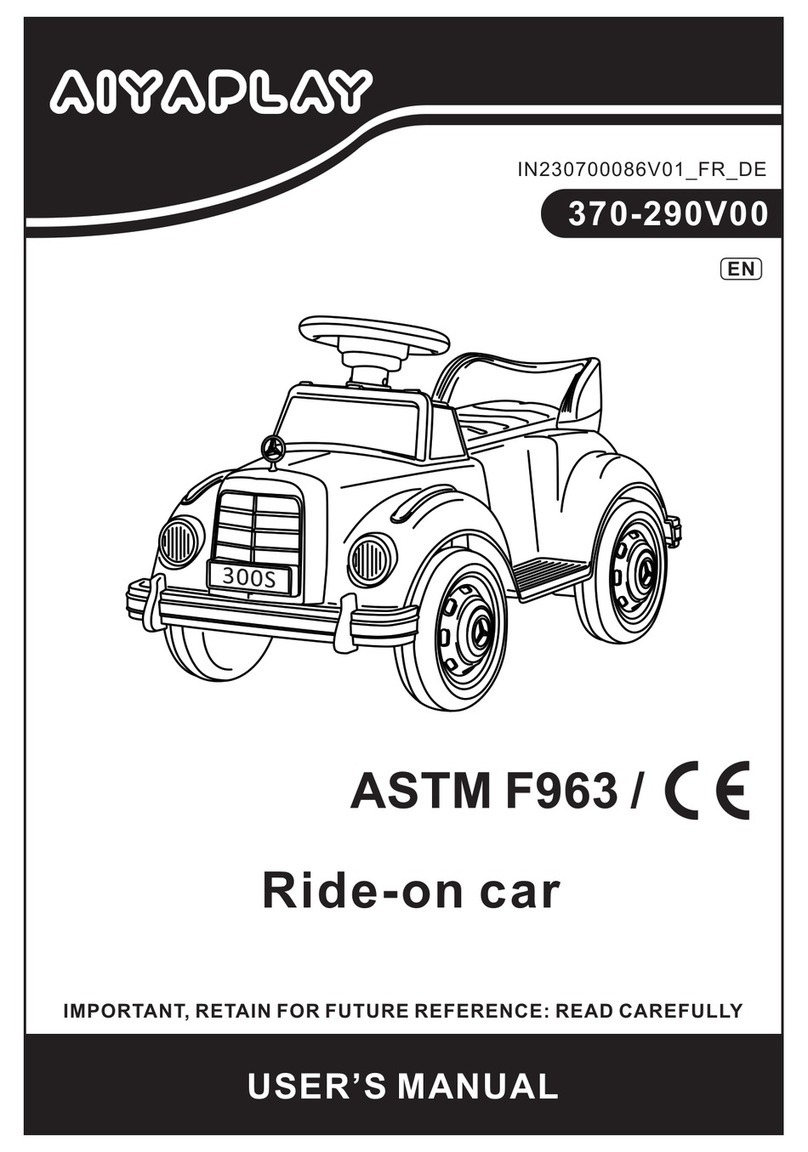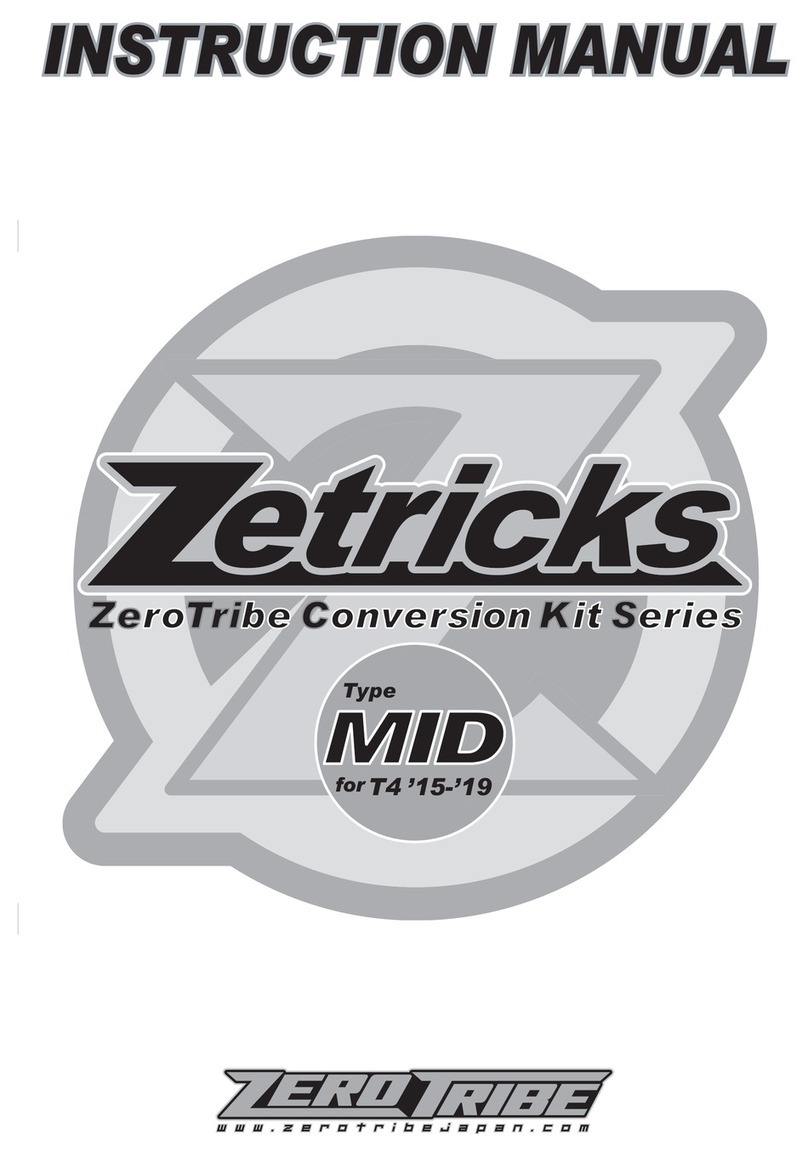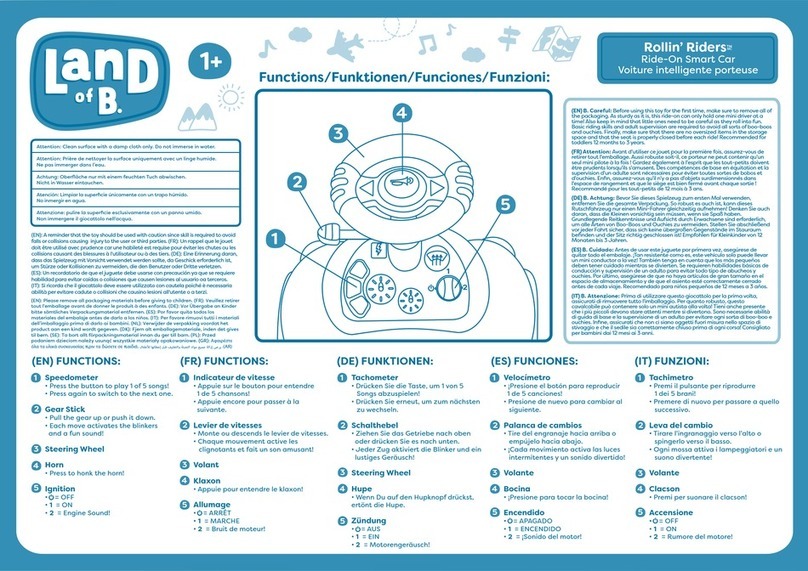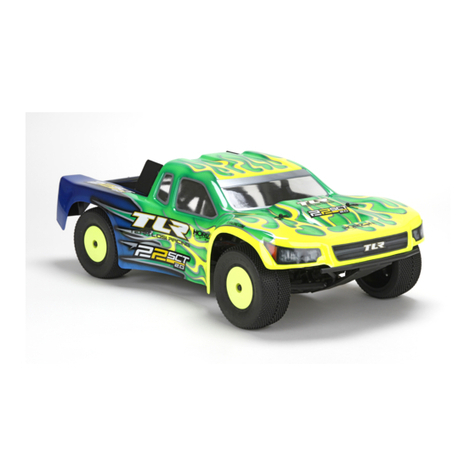
7
Programación del regulador Programming the ESC
Fase de programación
Program Mode
los valores del programa
Program Value
1 2 3 4 5 6 7 8
1. Modo de conducción
Drive Mode
Hacia delante, con
freno
Forwards, brake on
Hacia delante/marcha
atrás,
con freno
forwards / reverse,
brake on
2. Freno
Drag Brake Force
0 % 5 % 10 % 15 % 20 % 25 % 30 % 40 %
3. Baja Tensión
Low Voltage
OFF
2,6 V/ célula
2,6 V/cell
2,8 V/ célula
2,8 V/cell
3,0 V/ célula
3,0 V/cell
3,2 V/ célula
3,2 V/cell
3,4 V/ célula
3,4 V/cell
4. Modo Arranque
Start Mode
suave
soft
normal
normal
agresivo
aggressive
muy agresivo
very aggressive
5. Fuerza de frenado maximo
Brake Max.
25% 50% 75% 100%
Señales y dispositivos de seguridad
a. Sin LED = Pedal Pulso en posición neutral
b. LED rojo = el vehículo se mueve hacia adelante o hacia atrás
c. LED verde = el acelerador se encuentra en el máx. Posición delantera o inversa
A través de señales de advertencia, el regulador informa de ciertos estados:
1. Al encender, el procesador comprueba el voltaje que entra, y si éste estuviera fuera de los
límites aceptables, suena una señal acústica doble con una pausa de un segundo, entre las
señales individuales “beep-beep-, beep-beep-,beep-beep-”
2. Si la señal de entrada no es correcta, suena una señal acústica con una pausa de dos se
gundos, entre las señales individuales “beep-, beep-, beep-”
Este regulador está equipado con una serie de sistemas de protección para asegurar su uso
de forma segura:
1. Corte por baja tensión:
Cuando el nivel de tensión de una batería LiPo bajo carga desciende durante aprox. 2
segundos por debajo del umbral ajustado, se reduce la potencia del motor hasta que se
desconecta completamente. Tenga en cuenta que el motor no se puede volver a arrancar si
la tensión es inferior al valor preestablecido.
Atención: El vehículo debe desconectarse manualmente, de lo contrario, la batería
seguirá descargándose y puede dañarse por baja tensión.
2. Corte por sobre calentamiento
En el momento que la temperatura del regulador sube por encima de 95°C durante 5
segundos, se apagará el motor. Después del apagado es imprescindible dejar enfriar el
regulador, ya que en caso contrario sufre daños.
¡No se puede desactivar esta función bajo ningún concepto
3. Señal de entrada incorrecta
Si la señal de entrada es considerada incorrecta durante 0,2 segundos, se apagará el motor.
LED’s, errors and protection
In normal use the LED will illuminate as follows:
a. No LED = the throttle control is in the neutral position
b. Red LED = the vehicle is driving forwards or in reverse.
c. Green LED = the vehicle is at full throttle either forwards or in reverse.
In certain circumstances the ESC will omit an acoustic tone to warn you of a problem:
1. On switching on, the ESC will check the battery pack voltage and if it falls outside the correct
values it will omit double signals followed by a 1 second pause: “beep-beep-, beep-beep-,
beep-beep-”
2. If the ESC does not receive a signal from the transmitter it will omit single signal followed by
a 2 second pause: “beep-, beep-, beep-”
The ESC has ben equipped with a series of protective circuits to ensure safe operation:
1. Low voltage cut-o:
If the voltage drops below the set value for more than 2 seconds the ESC will switch the
choosen value per cell.
Attention: The vehicle must still be switched o manually because otherwise the
Battery is discharged further and can be damaged by undervoltage.
2. Temperature cut-o
If the internal temperature of the ESC rises above 95°C for more than 5 seconds the motor
Otherwise the ESC will be damaged. This function should not be disabled!
3. Signal loss
una programación óptima de forma rápida y segura, siga la estructura de menú ilustrada y la tabla
de arriba sobre las diferentes posibilidades de programación. Los diferentes pasos de programaci-
1. Modo de conducción:
En el modo “carrera“ – valor 1 – el vehículo solamente conduce hacia delante, el freno se
encuentra activado, conducir marcha atrás no es posible. Este modo es especialmente
adecuado para el uso del vehículo en competición. En el modo de conducción – valor 2 –
(hacia delante/marcha atrás con freno) el vehículo también puede ir marcha atrás, con el
freno activado. Este modo es adecuado para usos normales y para entrenamientos.
Nota Importante:
En el modo de conducción 2, se inicia la marcha atrás con un movimiento doble. Cuando
saca el mando del acelerador de la zona “hacia delante“ a la zona “marcha atrás“, el motor se
frena. Durante este proceso, el vehículo no llega a pararse del todo. Si ahora vuelve a llevar
el mando del acelerador a la zona “marcha atrás“, el vehículo irá marcha atrás, parando
primero por muy poco tiempo. Si después vuelve a empujar el mando del acelerador hacia
delante, da igual si el motor está en modo frenar o modo marcha atrás, el vehículo avanzará
hacia delante.
2. Freno:
Este menú indica el efecto del freno en porcentajes. El rango de ajuste se encuentra desde
0 hasta un 40%.
3. Modo Arranque:
2,6 V por célula. Si se pasa por debajo de este límite, el regulador corta el motor.
4. Modo Arranque:
posibilidades, desde un comienzo suave a uno muy agresivo. Tenga en cuenta que para los
modos mas rápidos, es decir, agresivo o muy agresivo, se precisan baterías muy potentes
con poca resistencia interna, ya que en caso contrario se pueden sufrir caídas de voltaje y el
motor vacilará al arrancar. Además es muy importante ajustar el motor y la transmisión
acorde con el modo de arranque elegido
5. Fuerza de frenado máxima.:
El regulador está equipado con un freno proporcional a la posición del mando del acelerador.
El efecto máximo del freno se consigue al empujar el mando del acelerador hacia delante al
máximo. Un efecto de freno fuerte, consigue parar el vehículo en muy poco tiempo, pero por
otra parte también implica un alto grado de desgaste en componentes mecánicos como p.ej.
la transmisión
Para evitar la programación con la tecla “Setup“, también existe la posibilidad de programar el
regulador de forma muy cómoda con una tarjeta de programación (No. 081454) que se vende por
separado.
various options they are explained below. Please use the programming table shown on page 6
1. Drive mode:
If option 1 is selected in Drive mode, the vehicle will only drive forwards and the brake is
active which make this mode the best choice for racing. In mode 2 the vehicle can be driven
forwards or in reverse and the brake is also active. This mode is useful for general use and
training.
Note:
When option 2 is selected, moving the throttle control back past the neutral point will initially
ESC will switch over to reverse. Moving the ESC forwards will make the vehicle drive
forwards regardless of whether it was braking or moving in reverse.
2. Drag Brake force:
In this option the drag braking force can be set. The value is set as a percentage and the
values are from 0 to 40%
3. Low voltage:
4. Start Mode:
With this option you can choose how the vehicle will accele rate when full throttle is applied
resistance otherwise the voltage will drop due to the high current draw and the motor may
stutter. Also ensure that your motor and gearing are capable of carrying the high loads.
5. Brake Max.:
The ESC is equipped with a braking system which works proportionally to the throttle control.
This means that the further the throttle control is moved rearwards the more braking force will
be applied. A higher value here will mean that the vehicle will brake harder but more strain will
be placed on the components, for example, the gearing.
To avoid the programming procedere with the set up botton, you can all so use the seperatly
available Programmcard (No. 081454).


